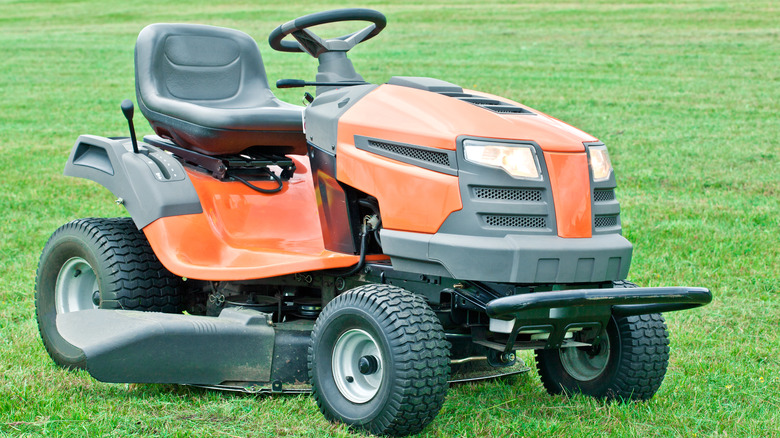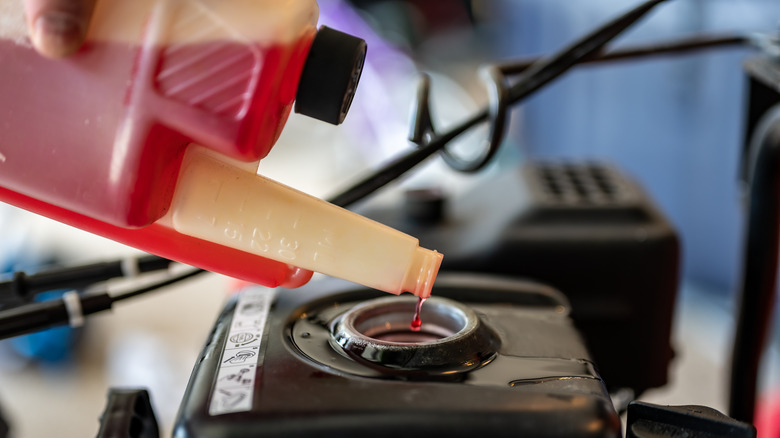Riding lawn mowers are as the name suggests: lawn mowers that you sit on, as opposed to standing behind and pushing. They’re kind of like motorized cows that produce perfectly manicured lawns, and they run on gasoline, just like cars. Because most riding lawn mowers use four-stroke (or four-cycle) engines, you can get away with using regular unleaded gas (though it’s definitely better to use higher quality fuel). Regular unleaded gasoline is denoted by the number 87 at gas pumps; it’s also the least expensive. Using low ethanol fuel is the best option for riding mowers, per Lawn Phix.
But just how much gas do you need to put into your riding mower? And how often do you need to add more fuel to the actual tank? Just like automobiles, the amount of gas you need will vary depending on a few different factors. So if you have a riding lawn mower, and you’re unsure of how much you should be putting in, we’ve got those answers. Because the last thing you want to do is overfeed your gas-powered moo-cow. That would be one expensive mistake.
Mower size plays a big part

According to Lawn Mowing 101, when comparing two-stroke to four-stroke engines, the latter is quieter, gives off less carbon emissions, and is more fuel savvy. Two-stroke engines are also lighter, so they’re generally used in yard maintenance equipment like leaf blowers and hedge trimmers, per HowStuffWorks. Four-stroke engines are also noticeably heavier.
Just like cars, trucks, and scooters, how much fuel your mower’s going to need ultimately depends on the size of the actual vehicle. Garden Tool Expert says a medium-sized riding mower can typically hold up to 2 gallons of gasoline, while larger models, like lawn tractors, have gas tanks that can hold up to 4 gallons. Four-stroke engines range from 13 to 30 horsepower, which means that a riding lawn mower can burn anywhere from 1 to 2 gallons of gas per hour (depending on the horsepower as well as external factors, via Mackalies Garden).
You can also increase your fuel efficiency

If you’re looking to save on gas, there are a few ways to tackle this. Remember that a riding lawn mower is still a gas-powered vehicle (albeit a slow moving one). It’s a good idea to perform routine maintenance on your mower, just as you would on your car. This means at a minimum, frequently checking the filters, spark plugs, tire pressure, and oil, to name a few, per The Dollar Stretcher.
For example, on autos, a dirty or clogged air filter prevents the engine from keeping cool. When this happens, the engine has to compensate, which is reflected in your frequent need to refuel. Underinflated tires, meanwhile, means your mower is going to have to work harder to get over those bumps, which equals extra gas consumption, per The Lawn Mower Guru.
To keep your fuel use as economical as possible, it’s also advised by HGTV not to mow wet grass. Moist clippings can get stuck on the underbelly of the beast and cause premature rusting, which puts stress on the engine. This, as you might have picked up on already, means more labor, which means your riding mower will be blowing through fuel as if gas-powered equipment is going out of style.